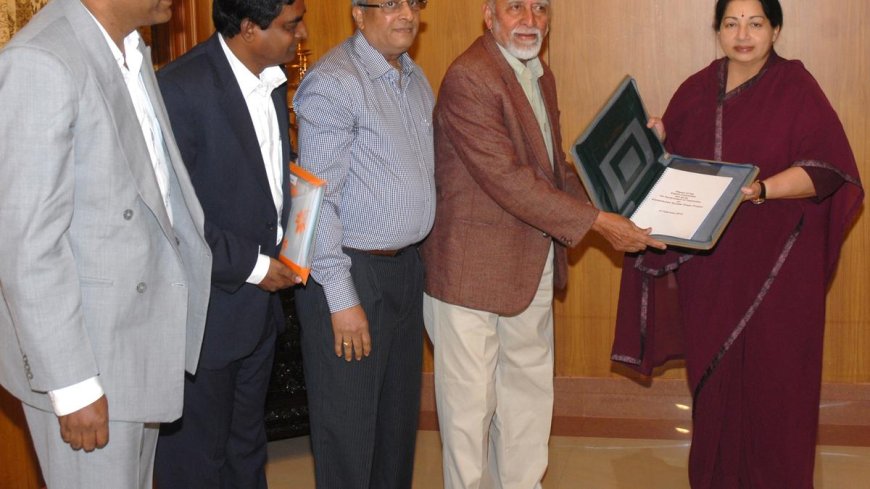How Jayalalithaa gave up opposition to nuclear plant, citing Srinivasan’s report

How Jayalalithaa Gave Up Opposition to Nuclear Plant, Citing Srinivasan’s Report
Breaking News, Daily Updates & Exclusive Stories - asarkari
In a striking transition of stance, former Chief Minister of Tamil Nadu, Jayalalithaa, has been noted for her earlier resistance to the Kudankulam Nuclear Power Plant project. However, following recommendations from an expert panel led by renowned physicist M.R. Srinivasan, she reversed her decision and paved the way for the project's advancement. This article delves into the timeline and implications of this significant policy shift, demonstrating the intricate dynamics of energy policy in India.
A Controversial Stance: Initial Opposition
In September 2011, Jayalalithaa expressed her concerns about the safety of the Kudankulam Nuclear Power Plant, which was being developed with Russian assistance. She urged the Central government to suspend progress on the project until all safety apprehensions were adequately addressed. Her reluctance stemmed from widespread apprehension among the public regarding nuclear safety, particularly in the wake of the Fukushima disaster in Japan, which raised alarm bells globally about nuclear energy's viability.
Forming an Expert Committee
Despite her initial opposition, in February 2012, Jayalalithaa established an expert panel to review the project comprehensively. This committee included distinguished figures in nuclear science, notably former Chairman of the Atomic Energy Commission, M.R. Srinivasan, who has been an influential advocate for nuclear energy in India. The formation of this committee was a proactive step towards addressing the issues raised by the public and reassessing the project's safety measures, which marked a significant shift in her approach.
The Turning Point: Green-lighting the Project
Based on the findings and recommendations set forth in Srinivasan’s report, Jayalalithaa made the pivotal decision to green-light the Kudankulam Nuclear Power Plant in March 2012. This decision surprised many, as it marked a significant departure from her earlier position. The report identified extensive safety protocols and modern technology that could effectively mitigate the risks associated with nuclear energy. This reassured her and ultimately led to the project's approval, emphasizing the capacity of scientific evidences to shape energy policies.
Implications for Tamil Nadu's Energy Landscape
The decision to proceed with the Kudankulam project has numerous implications for the energy landscape of Tamil Nadu and the larger context of India’s energy policy. As the demand for electricity continues to soar in India, nuclear power is increasingly viewed as a stable and reliable energy source that can help meet this rising need while also working towards reducing carbon emissions. The Kudankulam facility, upon completion, is expected to provide a conservation strategy for the state’s energy grid, as well as contribute to the national goal of enhanced energy independence.
Conclusion: A Complex Narrative
Jayalalithaa's transition from opposition to support for the Kudankulam Nuclear Power Plant reflects the complexities and nuances of energy policies in India. While the initial skepticism regarding nuclear safety encapsulated the concerns of many, the eventual endorsement of the project based on scientific evaluation highlights the importance of evidence-based policy-making. The journey from resistance to acceptance underscores how critical dialogue between policymakers and scientific experts can align concerns with pragmatism, leading to decisions that foster growth and resilience.
For more updates, visit asarkari.
Keywords:
nuclear power, Jayalalithaa, Kudankulam project, M.R. Srinivasan, energy policy India, Tamil Nadu nuclear plant, nuclear safety concerns, scientific evaluation, energy independence, renewable energy.What's Your Reaction?
 Like
0
Like
0
 Dislike
0
Dislike
0
 Love
0
Love
0
 Funny
0
Funny
0
 Angry
0
Angry
0
 Sad
0
Sad
0
 Wow
0
Wow
0









































